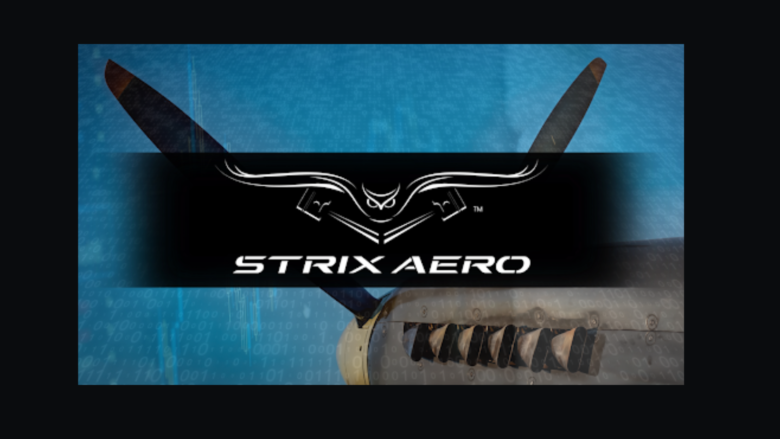The Allison V-1710 and Rolls-Royce Merlin
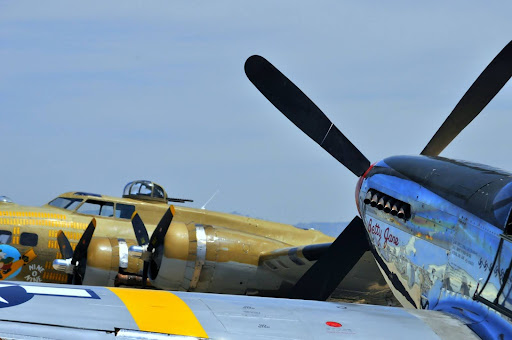
Anyone remotely familiar with World War II air warfare will have heard of the Allison V-1710 and the Rolls-Royce Merlin engines, either by their engineering achievements or by the role they played in the outcome of WWII. Both of these engines were massively important to the Allied war effort and powered the flight of many iconic and pivotal aircraft. While very similar in overall design, the V-1710 and the Merlin had one key difference: high-altitude performance. We’ll get into why that was the case shortly, but first let’s cover a brief history of these engines.
Quick History of the Allison V-1710 Engine
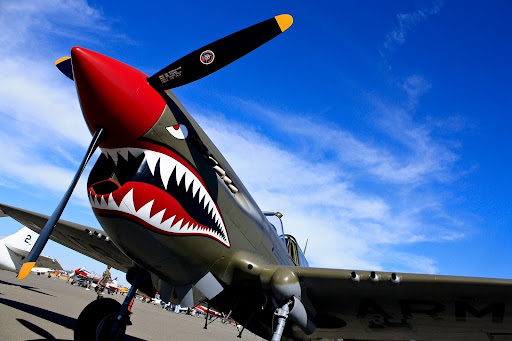
The Allison V-1710 came to be as a result of a common impetus for innovation; war. The project began in 1930 after the Navy ordered an experimental engine to breathe life into a new era of planes. Allison Transmission, acquired by General Motors in 1928, was tasked with designing a replacement for the Liberty L-12 engine. The V-1710 engine later became the first American engine rated for 1,000 horsepower to pass the USAAC 150-hour Type Test. (GERDAN 95) Ultimately, the Allison V-1710 powered the majority of U.S. fighters in World War II and was an imperative component of the U.S. air presence for WWII.
Quick History of the Rolls-Royce Merlin Engine
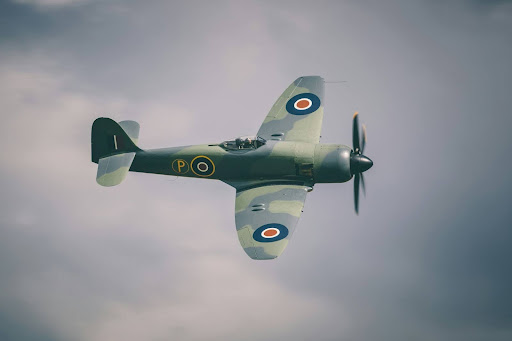
The Rolls-Royce Merlin engine is undoubtedly an iconic engine that played a very significant role in the British war effort. It was responsible for the altitude, speed, and duration of the Royal Air Force. It is also worth noting that many Merlin engines were produced by Packard, an American company. It was determined that investing in the machinery and raw materials needed to expand production would be a greater cost than purchasing the engines from the allied US. Over 170,000 Merlins were produced between 1935 and 1951, (Price 181) making their way into iconic warbirds and powering aeronautical innovation for years to come. Between Rolls-Royce and Packard, around seventy variants of the Merlin were produced and used in a wide variety of aircraft. (Wilson)
Significant Technical Advantages of the Allison V-1710 and Rolls-Royce Merlin Engines
| Engine | Allison V-1770 | Rolls-Royce Merlin |
| Lowest TO HP Rating | 650hp | 740hp |
| Highest TO HP Rating | 2825hp | 2070hp |
| Displacement | 1710cc | 1649cc |
The Allison V-1710 and the Rolls-Royce Merlin engines are often stacked against one another, both being 12-cylinder liquid-cooled engines that played a significant role in airborne warfare during WWII and engine development. An attribute that earned them both a place in fighter planes (as well as bombers and other applications) was their power output with their comparatively compact architecture. Now, at the time of their inception, it was commonplace for airplane engines to produce just over 1/4hp per cubic inch of displacement, while race cars of the same era were pushing more than 1hp per cubic inch. (Hazen 488) An inquisitive mind might then think it simple to just increase the power output of the airplane engines to match that of the cup cars. Great efforts were made from the first iterations of the Allison and Rolls-Royce engines to increase their total horsepower rating, but this had to be done with reliability as a forethought. If a cup car’s engine failed it was a lost race; if a fighter plane’s engine failed it was a pilot’s life and possibly a mission lost.
There were several ways the engineers of both of these engines worked to design an engine that was powerful and reliable, some by very similar means and some by very distinct means between the two. The most notable of these features include liquid cooling, supercharging, and anti-detonation injection.
Liquid Cooling
In a time when many plane engines were air-cooled, the engineers gathered the adoption of liquid-cooled engines allowed for better thermal management and overall efficiency. Other air-cooled engines of the time were capable of upwards of 1800bhp, but they weren’t efficient enough for warfare; air-cooled engines of similar power on similar applications cruised nearly 60mph slower, burning more fuel to travel the same distance. (Hazen 500)
Being that liquid-cooled engines did not need direct airflow (since the radiator could be mounted separately from the engine) and that liquid cooling lent itself to a very different engine architecture, the frontal area of the engine could be reduced, thus reducing drag. That made the engine’s power more useful and opened up applications of these engines to a more diverse range of chassis designs and demands. Liquid cooling also made these engines less susceptible to overheating from temporary overloads, better enabling sessions of wartime-emergency increased power output. As such, liquid-cooled engines had a great advantage in military aircraft.
Supercharging
In the case of WWII engines, the engineers were not concerned about fuel efficiency in the sense of designing environmentally friendly engines; instead, burning less fuel allowed the plane to carry more payload and fly further. When the battle is taking place on another continent, that range becomes a meaningful difference-maker. These engines needed to translate as much of the fuel’s energy into thrust to fly higher, further, and with greater payloads, all while fighting thinner air as they continued to climb.
While both the Allison V-1710 and the Rolls-Royce Merlin engines were supercharged, their superchargers are what distinguished them from each other the most. The Merlin sported a two-stage supercharger responsible for its superiority at altitude during the war over the Allison V-1710. As demonstrated by the chart below, the earlier Allison V-1710 models suffered great losses of power at higher altitudes.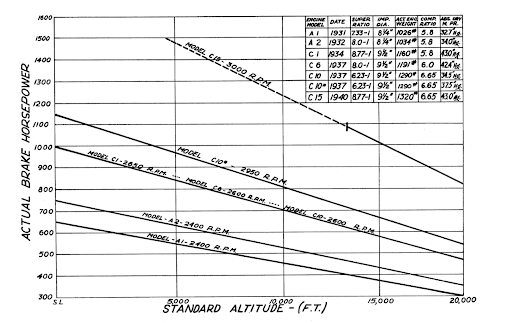
Some later V-1710 models did adopt a two-stage supercharger setup similar to the one employed by the Rolls-Royce Merlin, though it lacked charge cooling. One feature unique to the V-1710 was the incorporation of a compound induction system, namely a turbo-supercharger. In essence, energy was captured from the exhaust by a turbine geared to the crankshaft in addition to a standard supercharger.
Anti-Detonation Injection (Liquid Injection / Methanol Injection)
Both the Allison V-1710 and the Rolls-Royce Merlin saw variations equipped with water/methanol injection that allowed the engines to operate under higher boost pressures without experiencing detonation with the added benefit of charge cooling. Ultimately, this meant more air could be packed into the same volume, meaning more fuel could be effectively burned for each combustion stroke and more power extracted from every revolution. This system was particularly important for the war-emergency rating of the aircraft, allowing the aircraft to operate at increased power to climb higher or travel faster for short bursts.
In review, these engines were strikingly similar but there remained some stout differences. While the Merlin is often touted as superior for its high-altitude capabilities and very high production volume, there are some advantages where the Allison engine still wins out. With a relatively low number of components and robust construction, the Allison was easy to produce and reliable.
Key Innovations from the Allison V-1710 and Rolls-Royce Merlin
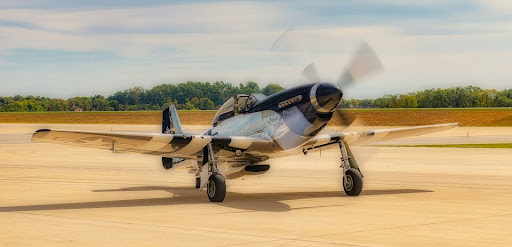
The feat of taking an engine architecture and increasing its power output by 3-4x without making any significant changes to the capacity, compression ratio, or valve timing is incredible in its own right. This allowed aircraft to (literally) reach new heights, climbing to 36,000 feet in some examples. Of course, this was achieved through forced induction via superchargers and turbo-superchargers. This later developed into centrifugal compressors and, ultimately, early jet engines. (Price 181)
It’s with great admiration that we look back at what these engines were able to achieve in their time. In respect to their legacy, we’re proud to keep their history alive and airborne. Today, these engines continue to power warbirds that have stood the test of time, albeit with some due maintenance. Whether you’re interested in learning more or you have an Allison V-1710 of your own that you’re looking to have serviced, rebuilt, or otherwise made airworthy, we at Strix Aero are ready to help and eager to speak with you. Contact us today.
Works Cited
GERDAN, DIMITRIUS. “Late Developments of the Allison Aircraft Engine.” SAE Transactions,
1945, pp. 95-102.
Hazen, R. M. “The ALLISON AIRCRAFT-ENGINE DEVELOPMENT.” SAE Transactions, 1941, pp.
488-500.
Price, Peter. “Rolls-Royce-100 Years of Power.” Journal of Aerospace Sciences and Technologies,
2005, pp. 180-192.
Whitney, Daniel D. “Allison Piston Engine Specifications.” Aircraft Engine Historical Society, 8
August 2019, https://www.enginehistory.org/Piston/Allison/AllisonSpecs/AllisonSpecs.shtml.
Accessed 28 February 2024.
Wilson, Gordon A. The Merlin: The Engine that Won the Second World War. Amberley Publishing
Limited, 2018.

